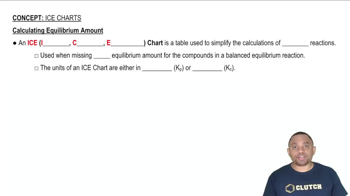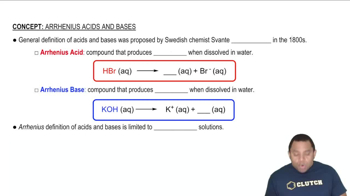Textbook Question
Solve an equilibrium problem (using an ICE table) to calculate the pH of each solution. a. 0.15 M HF
 Verified step by step guidance
Verified step by step guidance



Solve an equilibrium problem (using an ICE table) to calculate the pH of each solution. a. 0.15 M HF
Solve an equilibrium problem (using an ICE table) to calculate the pH of each solution. b. 0.15 M NaF
Solve an equilibrium problem (using an ICE table) to calculate the pH of each solution. c. a mixture that is 0.15 M in HF and 0.15 M in NaF
A buffer contains significant amounts of acetic acid and sodium acetate. Write equations showing how this buffer neutralizes added acid and added base.
A buffer contains significant amounts of ammonia and ammonium chloride. Write equations showing how this buffer neutralizes added acid and added base.
Use the Henderson–Hasselbalch equation to calculate the pH of each solution in Problem 29.